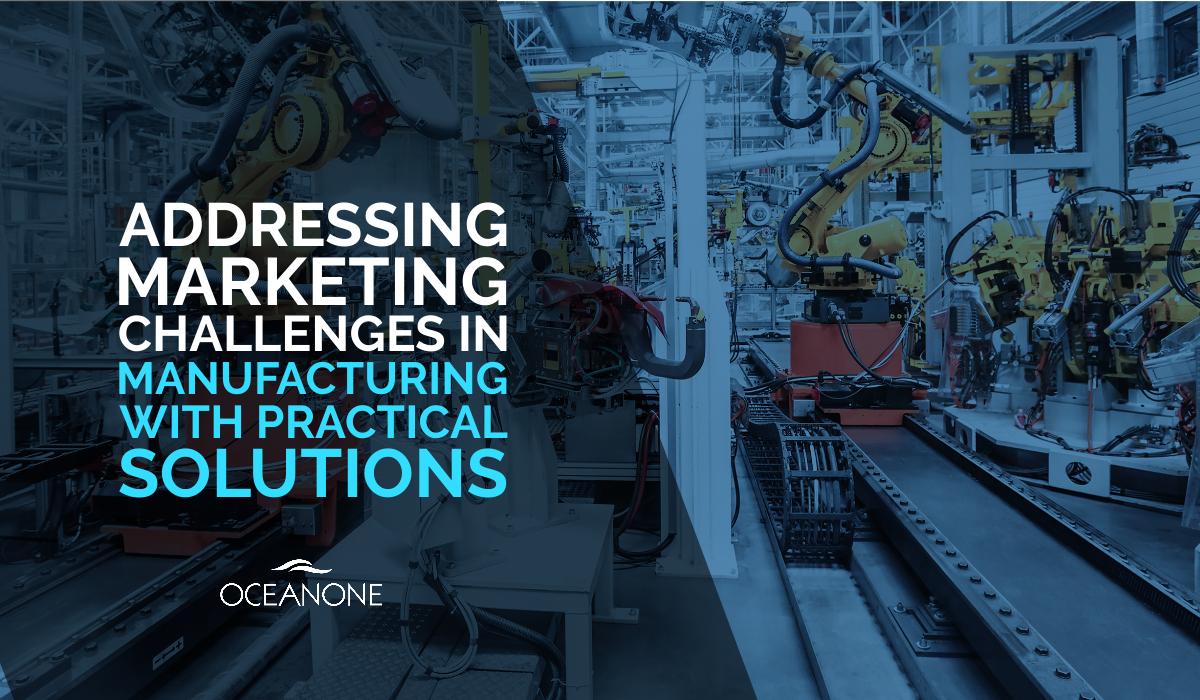Identifying challenges is the first step; addressing them with practical solutions is where true innovation lies. Let’s delve deeper into each challenge previously discussed and explore specific examples of how manufacturers might overcome them.
Evolving Digital Landscape
Challenge: Keeping up with the fast-changing rules of digital marketing.
Manufacturing companies often find it difficult to keep up with the rapidly evolving digital landscape. Whether it’s mastering the nuances of social media or understanding the intricacies of search engine optimization (SEO), manufacturing firms must stay updated to remain competitive.
Solution Example: A manufacturing firm that specializes in automotive parts decides to invest in regular training sessions for their marketing team. They bring in digital marketing experts quarterly to ensure their team is updated with the latest SEO practices, social media trends, and online advertising strategies.
Building a Brand in a Crowded Market
Challenge: Standing out amidst numerous competitors.
Solution Example: A manufacturer of eco-friendly paints decides to differentiate themselves by creating a unique selling proposition (USP) around sustainability. They launch a campaign showcasing their zero-carbon footprint manufacturing process, giving them an edge in a saturated market.
Engaging the Modern Consumer
Challenge: Connecting with informed and discerning customers.
Solution Example: An electronics manufacturer launches a behind-the-scenes video series that showcases the stringent quality control measures they employ. This transparency builds trust and effectively engages their target audience.
Balancing Traditional and Digital Marketing
Challenge: Seamlessly integrating old and new marketing tactics.
Solution Example: A furniture manufacturer combines their traditional print catalog with QR codes. Scanning these codes takes customers to immersive online 3D views of each furniture piece, thereby merging traditional with digital.
Adapting to Global Markets
Challenge: Tailoring marketing efforts to diverse international audiences.
Solution Example: A toy manufacturer entering the Asian market researches cultural preferences and local festivals. They then launch special edition toys celebrating local traditions, ensuring their product resonates with the new audience.
Staying Ahead of Technological Advancements
Challenge: Incorporating new technologies into marketing strategies.
Solution Example: A fashion apparel manufacturer employs Augmented Reality (AR) in their online store. Customers can virtually ‘try on’ clothes using their phone cameras, enhancing the shopping experience and driving sales.
Maintaining Customer Loyalty in a Competitive Environment
Challenge: Ensuring consistent customer engagement and loyalty.
Solution Example: A power tools manufacturer introduces a loyalty program. Customers earn points for every purchase, which can be redeemed for discounts, free servicing, or exclusive product previews, thereby incentivizing repeat purchases.
Data-driven Decision Making
Challenge: Efficiently utilizing vast amounts of available data.
Solution Example: A sports equipment manufacturer invests in advanced analytics tools. They analyze customer behavior data to identify popular products, leading them to increase production of top-selling items and reduce stocks of less popular ones.
Sustainability and Eco-friendly Initiatives
Challenge: Aligning marketing efforts with environmental consciousness.
Solution Example: A cosmetic manufacturer shifts to eco-friendly packaging made from recycled materials. They prominently display this on their products and run a marketing campaign highlighting their commitment to reducing plastic waste.
Conclusion
In the world of manufacturing, challenges are ever-present. However, with a proactive approach and innovative thinking, these obstacles can be transformed into growth opportunities. By identifying specific issues and implementing tailored solutions, manufacturers can not only address immediate concerns but also pave the way for long-term success.













